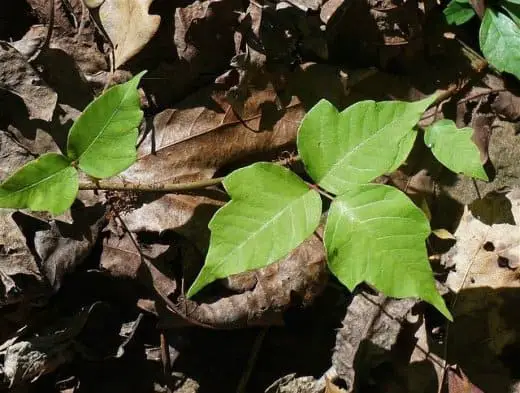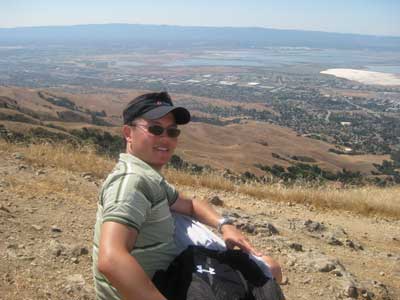
When you’re planning to spend time in the wild – whether you’re camping or hiking – you need to be prepared for all eventualities.
The most successful campers pay attention to detail and have strategies to deal with anything from the wind blowing away your tent to an outbreak of poison ivy.
Poison ivy is a plant found across the United States, and just the briefest brush against it can lead to the eruption of a rash and hours of discomfort. However, an outbreak of a poison ivy rash doesn’t mean that you need to end your camping trip.
Equip yourself with information about the plant and with ways to treat a rash, and you can make sure an encounter with poison ivy doesn’t derail your camping trip.
Treating Poison Ivy Outbreaks
The first thing to do when you think you’ve come into contact with poison ivy is to find some warm water, dilute it with soap and spend 20-30 minutes rinsing any part of your body which has come in contact with the oil in running water.
If you don’t have access to running water at your campsite, look for a stream or river. Doing this can stop the rash from getting too severe and also prevent the oil from spreading to other parts of your body.
Wearing thick rubber gloves, you should also scrub anything else which may have had contact with the plant, including clothes, to remove all traces of the toxic oil.
Medicines to treat poison ivy
While packing your gear, think ahead, and pack medicines that can help treat poison ivy.
These include:
- Use rubbing alcohol to scrub your skin immediately after coming into contact with the plant. Carrying rubbing alcohol wipes is especially handy.
- Hydrocortisone creams can soothe itching and rashes when its a mild case of poison ivy
- Corticosteroids (steroids) are used to treat severe cases of poison ivy. Corticosteroids can be in either tablet or cream forms; the tablets are best when the poison ivy rash is at its height, and the cream is best once the blisters have subsided – it stops them flaring up again. These are over the counter medications which are safe to take without a prescription – however, they are not safe for children under six and should not be taken for more than two weeks.
- Antihistamine oral medicines – one of the annoying side effects of having a poison ivy rash is that the constant itching will stop you from enjoying a deep sleep. Take antihistamine medication like Benadryl to help soothe you to sleep.
- Calamine lotion can help soothe a minor rash.
Natural Remedies For Poison Ivy
If you’ve forgotten to pack medication that can treat poison ivy, then look at your food supply for some natural remedies. These include:
- Lemon juice, which you should rub on your skin soon after it’s been in contact with poison ivy.
- Baking soda paste: Mix three tablespoons of baking soda with one tablespoon of water. Apply the paste on the areas with the rash – it can help soothe itchy, irritated skin.
- Apple cider vinegar: Soak a brown paper bag with apple cider vinegar and then place the bag over your rash for instant relief.
- Cucumbers: Slice cucumbers and gently place the slices over your rash. The cucumber will draw out the toxic oil and reduce the rash on your skin,
- Banana peels: Place banana peels over the infected area and allow them to sit for 30 minutes.
Other natural remedies to treat a poison ivy rash include using aloe vera gel over the affected area or taking an oatmeal bath.
While an oatmeal bath may be difficult to manage at the campsite, you can soak oatmeal in water, tie it into the bag and use the bag as a compress on your skin. Even soaking a cloth in cool water and using it as a compress may give your skin some relief.
What Not To Do When Treating Poison Ivy
Whichever method you choose to treat poison ivy, try to stop yourself from scratching your rash as that’ll increase the chances of it getting infected. Scratching can also make the blisters on your skin burst, which will make it more painful.
Additionally, don’t use antihistamine creams or anesthetic creams directly on the rash as it can make the symptoms worse.
When to See a Doctor
With home and over the counter remedies, the poison ivy rash should clear up within a week or two. However, after two weeks, if your skin isn’t settling down and it’s starting to impact your camping trip, it may be time to pack up and find a doctor.
If the rash becomes infected, you’ll find that your blisters are continuously oozing and that your skin has yellow scabs. An infected rash may need some additional help to heal, so it’s a good idea to see a doctor who can prescribe antibiotics to clear up the rash.
In severe cases, poison ivy can cause facial swelling and make it difficult to breathe and swallow. If this happens, don’t waste time on trying to treat it; head to the nearest clinic immediately.
You should also head over to the doctor if you develop a fever over 100 degrees F and if the rash appears to be spreading to other parts of your body.
However, this is only in extreme cases; for the most part, poison ivy rashes and outbreaks should not interfere too much with your camping trip.
Familiarize Yourself With Poison Ivy
We all know the best cure is prevention, so it’s worthwhile taking a moment to learn a little about poison ivy and how to identify it, so you don’t end up walking into a clump of it.
This article is owned by Recapture Nature and was first published on November 9, 2019
Poison ivy is found across most terrains and environments, including in wooded areas, on riverbanks, and in open fields, so stay vigilant at all times!
The leaves of the plant typically grow in groups of three and are pointed at the tip. The leaves tend to be shiny and change colors in different seasons; in winter they are bright orange, in autumn they are red, and in spring they are a vibrant green. Poison ivy plants may also have clumps of white berries growing on them.
Poison ivy plants contain urushiol, which is an oil that causes allergies and skin irritation.
If you do touch a poison ivy plant or anything which has come in contact with the plant, the oil will immediately begin to make its way through your skin.
However, it can take a while before the symptoms set in; some people begin to develop a rash four hours later, while for others, the rash sets in only 2-3 weeks after their poison ivy encounter!
This article is owned by Recapture Nature and was first published on November 9, 2019
Because of that, it can be hard to connect the rash with poison ivy, so it’s helpful to know what the symptoms are. These include:
- Red streaks on the skin – similar to what scratches look like
- Hives and itchy skin
- Blisters which can burst and ooze pus
When you scratch a poison ivy outbreak, you may develop a more severe rash that makes your skin redder and more likely to ooze.
It’s not a pretty picture, is it? Your best bet to dealing with poison ivy is to be extra cautious when you’re wandering through the woods and to stop yourself from coming into contact with it.
If you think you’re heading to an area with lots of poison ivy, get some over the counter barrier creams. Look for barrier creams that contain bentoquatam, which can prevent the plant’s oils from seeping into your skin. Apply the cream an hour before heading out to explore the woods.
However, even if you take all the precautions possible and tiptoe through the woods – which will take some of the fun out of camping – you may still come into contact with poison ivy. It’s not the end of the world – you don’t need to pack up your camping gear and head home.
This article is owned by Recapture Nature and was first published on November 9, 2019
Final Thoughts
Stay aware and try to avoid contact with a poison ivy plant, and be sure to pack medicines that can help you treat any rashes. In most cases, a rash will be annoying interference, which will quickly clear up.

